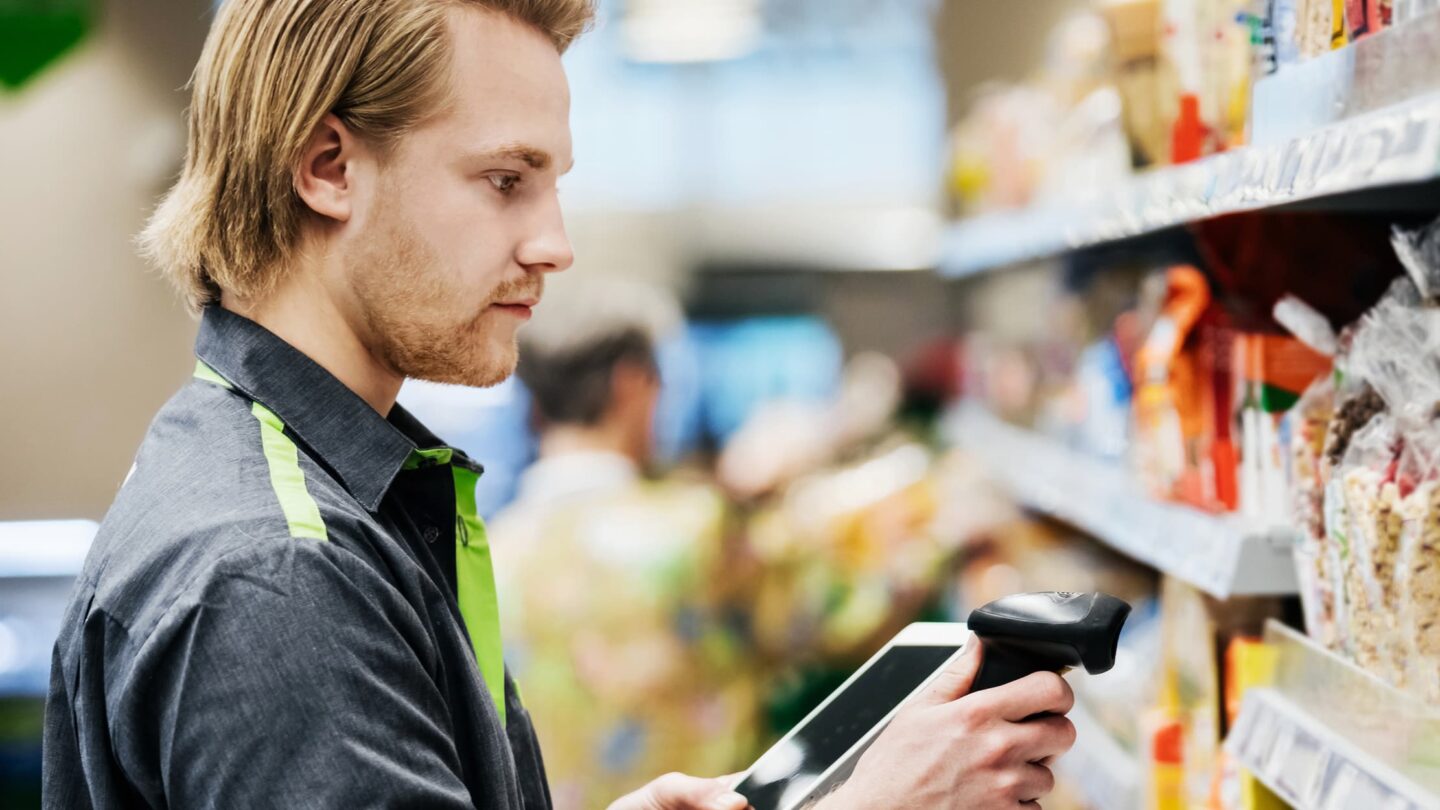Money Matters
Plastic packaging tax: What businesses need to know about the new legislation
Are you affected by the plastic packaging tax? Discover who's affected, and how, plus what's required to register and file tax returns.

The UK government is understandably keen for businesses and consumers to use recycled materials wherever possible.
To enforce this, on 1 April 2022, it applied a tax to some plastic packaging manufacturing and imports (or packaging for which plastic is the main component).
In this article, we look at some of the details of the tax, such as whether it applies to your business, and what you can do now.
Here’s what we cover:
- What is the plastic packaging tax?
- When does the new legislation start?
- Is my business affected by the plastic packaging tax?
- How do I register for the plastic packaging tax?
- Records that businesses need to keep
- What needs to be included on tax returns?
- Tips to help you with the new legislation
- Final thoughts on the plastic packaging tax
What is the plastic packaging tax?
Planned since 2018, the plastic packaging tax is a flagship government scheme and a key part of its environmental and sustainability planning.
As its name suggests, it imposes a tax on the manufacture or import of plastic packaging with less than 30% recycled content.
For packaging comprising mixed components (such as cardboard and plastic), if the weight of the plastic constituent is higher than the other components then the packaging falls within scope of the tax.
Plastic packaging with 30% or more recycled content isn’t affected (with the same constituent proviso above).
If the tax applies, it’s charged at £200 per metric tonne of packaging. The business must register ahead of time, and a special tax return must be filed.
Businesses are encouraged to make it clear if the plastic packaging tax applies.
At the very least, you should include a statement about the tax with invoices, showing it’s been paid (however, although this requirement was due to come into effect on 1 April 2022, it’s been delayed).
But the government would like businesses to engage with customers about the use of recycled materials.
The tax is applied quarterly.
It’s paid by the manufacturer or importer, and isn’t charged to customers like VAT (although manufacturers and importers can, of course, increase their prices to cover the cost).
Any other taxes remain chargeable on the goods, such as VAT.
Exported packaging is not subject to the tax, and deferment, credits or reliefs can be applied.
If your customer subsequently exports the packaging then these also apply, and you can claim retrospectively.
When does the new legislation start?
The new legislation started on 1 April 2022.
It’s only plastic packaging that’s manufactured or imported on or after this date that should be included in any de minimis or subsequent tax calculations.
The tax returns are quarterly, which is to say they cover four accounting periods each year. These are:
- 1 April to 30 June
- 1 July to 30 September
- 1 October to 31 December
- 1 January to 31 March.
It isn’t possible to choose your own accounting periods.
Tax returns and payments must be submitted by the last working day of the month following the end of each accounting period above.
So, the first tax return and payment for impacted businesses will be due by the end of July 2022.
There is a time limit of two years from the manufacture or import of the packaging in which you can claim for it.
Is my business affected by the plastic packaging tax?
The good news for smaller businesses is there’s a threshold of 10 tonnes a year. So, if you manufacture or import packaging under this weight (or manufacture it) across a 12 month rolling period, the tax won’t apply.
In actuality, however, 10 metric tonnes per 12 month period is a de minimis threshold.
A business can manufacture or import up to 10 metric tonnes of taxable plastic packaging in that 12 month period before the tax should be applied in the following quarter.
The government provides the example of a business manufacturing four tonnes of taxable plastic packaging on a monthly basis.
Following 1 April they manufacture four tonnes, another four tonnes in May, following by a further four tonnes in June.
Having now passed the de minimis threshold, because they’ve manufactured 12 tonnes since the 1 April commencement date, they must register for the tax by 30 June.
They are liable for manufacturing or imports from 1 July.
How do I register for the plastic packaging tax?
To register for the plastic packaging tax on the HMRC website, you need to provide the following details:
- Your business type
- Your businesses address and contact details
- The date your business became liable for plastic packaging tax
- An estimate of how much finished plastic packaging you expect to manufacture or import in the next 12 months
- A customer reference number. This could be your Corporation Tax Unique Tax Reference (UTR), Self Assessment UTR (or National Insurance number), Company Reference number, or Charity Registration number.
Once registered, you’ll be assigned a reference number that you should use in correspondence.
Records that businesses need to keep
Once registered for the tax, you’re required to keep the records for at least six years following the end of each accounting period.
In summary, the records are:
- Weight details of each plastic packaging component
- Details of the weight of plastic packaging exported, if applicable
- Evidence of recycled content, including how you’ve worked out the percentage of recycled plastic, its source, and what product lines the content is used with
- Evidence of why an exemption applies (e.g. packaging for medicine used for human medical products).
Notably, you should keep records even if you’re below the threshold.
This is because the threshold is a rolling 12 month time period, so you could hit the limit and be liable to keep records and pay tax.
All measurements for the tax should be in kilograms (kg).
What needs to be included on tax returns?
The following information needs to be included on plastic packaging tax returns:
- The total weight of chargeable plastic packaging components manufactured in the UK in the relevant accounting period (e.g. the quarterly periods mentioned above).
- The total weight of finished plastic packaging components imported into the UK in the accounting period.
- The total weight of finished plastic packaging components not subject to the tax.
- The total weight of finished plastic packaging components manufactured or imported for use in the immediate packaging for licenced human medicines. This is because this kind of packaging is one of the exemptions.
- The total weight of chargeable plastic packaging components manufactured or imported in this accounting period, which have been exported directly by you during this accounting period and are due to be exported directly by you within the next 12 months.
- The total weight of any finished plastic packaging components that contain at least 30% recycled plastic content.
- The total value of taxed plastic packaging components for which a credit is being claimed (values should be listed in pound sterling).
- The total weight of plastic packaging components that are subject to the tax after deducting, which is to say:
- The total weight of finished plastic packaging components not subject to the tax.
- Deferral of the tax liability of packaging components intended for direct export.
- Tax credits claimed for the accounting period.
- Tax due for this period (again, listed in pound sterling).
- A declaration that all the information provided is true and correct.
Tips to help you with the new legislation
Needless to say, preparing for the plastic packaging tax involves both pragmatic planning as well as an inspection of your existing suppliers and processes. You may need to make changes ahead of the tax’s introduction.
Here’s a handful of things you can do to ensure you’re up to speed with the new legislation:
- Understand the detail of the legislation. Like most taxes, the plastic packaging tax sounds simple on the surface but contains myriad details that can catch out the unwary. HMRC has plenty of information to help you gain clarity on what’s required..
- Switch to recycled materials so the tax doesn’t apply. This is, of course, the intention of the tax. Indeed, the government believes it will affect just 20,000 businesses across the UK because many will either be prompted to use sufficient recycled materials, or have already done so.
- Speak to your suppliers. They’ll undoubtedly already be aware of the tax, but they may not know that you wish to avoid it. Needless to say, some suppliers may be planning on some of their customers being ignorant of the new tax in order to perhaps offload older taxable stocks. If you need to switch to new suppliers or new types of packaging, this will present supply chain concerns that you might wish to get sorted sooner rather than later.
- Do a dry run. If the tax applies to you, and you can spare the resources, try applying the detail of the tax to a previous quarter. This will help you create processes and, of course, work out your likely liability.
Final thoughts on the plastic packaging tax
Nobody likes a new tax but understanding the reasoning behind this one, and taking measures to avoid it, is ultimately the intention of the government.
This is a somewhat unusual situation where the government would ostensibly be happy to reduce revenue from this tax.
Getting started sooner rather than later in understanding the impact of the tax is a good idea. With any luck, you shouldn’t need to make many changes, but these need to be understood well in advance.
Editor’s note: This article was first published in January 2022 and has been updated for relevance.








Ask the author a question or share your advice